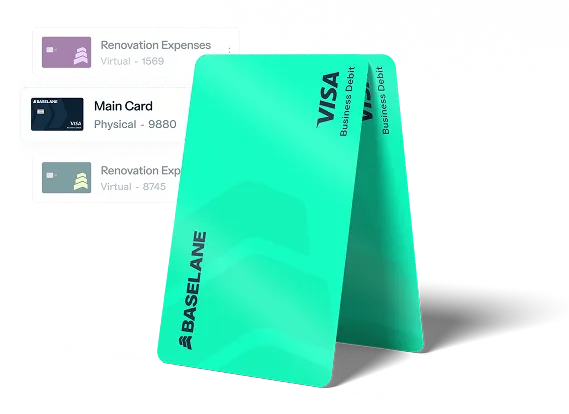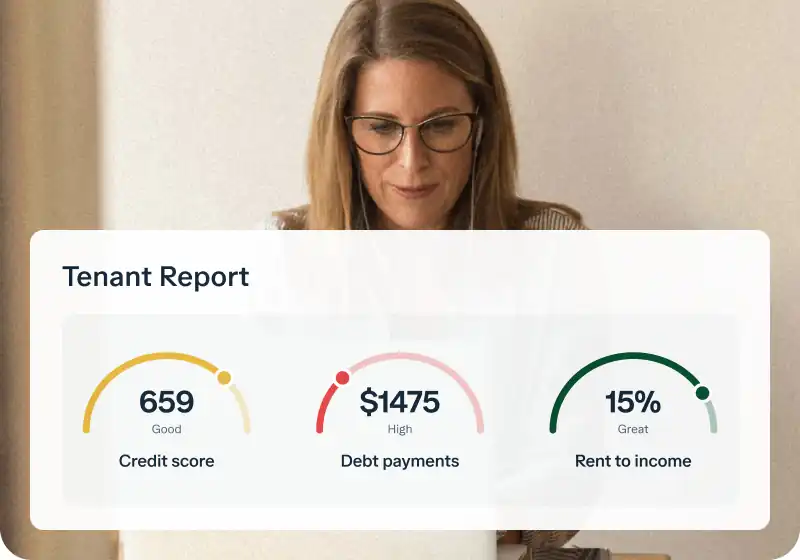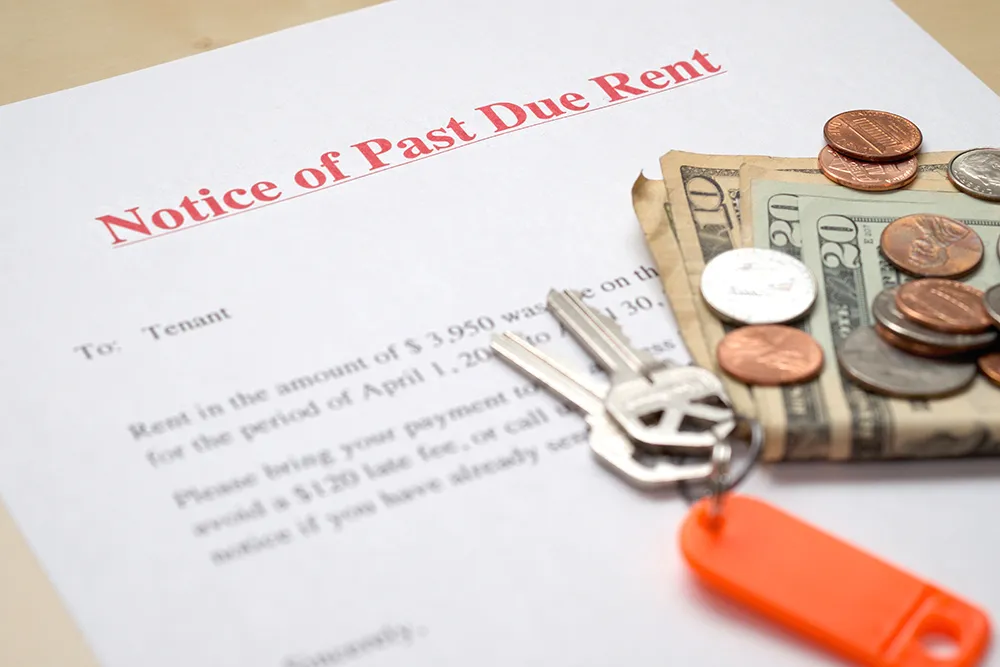The landscape of rent collection is constantly evolving, with landlords increasingly seeking efficient and secure digital solutions. Electronic Fund Transfers (EFTs), particularly through the Automated Clearing House (ACH) network, have become a popular method.
Understanding the specific advantages and disadvantages of using EFT for rent payments is crucial for landlords and property managers aiming to optimize their operations by 2025 and beyond.
Key takeaways
- EFTs, particularly ACH, are becoming the preferred method for rent payments due to their efficiency, security, and benefits for landlords, like time-saving, cost-effectiveness, and improved financial organization.
- Challenges with EFTs include processing delays, the risk of ACH reversals and disputes, and complexities in handling partial payments without a comprehensive property management platform.
- Dedicated ACH-based platforms are generally superior to credit card payments, peer-to-peer apps, and wire transfers for rent collection.
What is electronic funds transfer (EFT) for rent payments?
Electronic Funds Transfer (EFT) is a broad term that covers any transfer of money initiated electronically. For rent payments, the most relevant and commonly used form of EFT is an Automated Clearing House (ACH) transfer.
- ACH Transfer: This is a bank-to-bank transfer processed through a secure U.S. network managed by Nacha (National Automated Clearing House Association). ACH payments are ideal for recurring transactions like rent because they are reliable, secure, and typically the most cost-effective electronic option, often costing as low as $0.26–$0.50 per transaction.
- Other Digital Methods: While peer-to-peer (P2P) apps like Venmo or Zelle are electronic, they are generally discouraged for professional rent collection. They often lack the formal tracking, recurring payment features, and controls (like blocking partial payments) that dedicated landlord platforms provide.
Bottom line is, when we talk about professional EFT for rent, we are primarily focusing on the reliability and automation of an ACH-based system, including eChecks. Read more about eCheck bank accounts.
How ACH payments work for rent collection
When a tenant pays rent via ACH, they authorize a direct debit from their bank account. This authorization is typically provided through a secure online portal or form. The payment request then travels through the ACH network.
The tenant's bank (Originating Depository Financial Institution or ODFI) sends the payment information to the ACH operator. The ACH operator (either the Federal Reserve or The Clearing House) then routes the payment to your bank (Receiving Depository Financial Institution or RDFI). Once processed, the funds are deposited directly into your designated account.
This process involves several steps, from initiation to settlement, ensuring that funds are securely moved between bank accounts. The entire system is designed for high-volume, batch processing of transactions, making it ideal for recurring payments like rent.
Why landlords are increasingly adopting EFT for rent
EFTs are making their place among landlords for rent collection due to various benefits they bring.Let's discuss some of the common ones.
Saves time and increases on-time payments
You can set up automated, recurring rent requests or allow tenants to enroll in autopay. This automation eliminates the time spent on manual tracking and reduces late payments. The average investor saves 150 hours per year using automated banking solutions like Baselane.
Cost-effectiveness
ACH payments are significantly cheaper than wire transfers (which can cost $15–$50 or more) and drastically reduce the overhead associated with paper checks (which average around $3.00 per transaction when accounting for processing and fees). ACH is often free for landlords.
Superior security and audit trail
ACH transfers are processed through a secure, regulated network, providing strong security and a clear electronic record for every payment. Unlike cash, EFT leaves an unquestionable paper trail for tax time and dispute resolution.
Clear financial organization
Using a dedicated EFT system, especially one integrated with real estate banking and bookkeeping, allows you to separate your rental income from personal funds. This eliminates the risk of "commingling funds" and makes tax reporting simple, helping you avoid an audit.
Faster, more reliable funds
EFT payments eliminate the risk of bounced checks and allow you to see the payment status in real-time. While most ACH takes 2–5 days to process, some dedicated platforms offer expedited "QuickPay" options for faster payouts.
Improved tenant experience
Tenants can easily set up one-time or recurring payments from their bank accounts, often through a dedicated tenant portal. This ease of payment enhances tenant satisfaction and retention. Offering a flexible rent collection system can bring in more timely payments as well.
Cons of using EFT for rent payments
While electronic rent transfer offers many benefits, landlords should also be aware of its potential drawbacks. Understanding these challenges can help in implementing robust strategies to mitigate risks.
Processing delays
One significant disadvantage of ACH transactions is their processing time. Transferred rent via ACH typically takes one to several business days to clear and become available in the landlord's account. This delay can impact a landlord's cash flow, especially when managing multiple properties.
Unlike instant transfer apps, ACH operates on a batch processing system, meaning transactions are grouped and processed at specific times. For landlords relying on immediate funds, these delays can present a challenge. Proper financial planning is essential to account for these processing times.
ACH reversals & disputes
A major concern for landlords using ACH is the possibility of transaction reversals. Tenants can initiate an ACH reversal for various reasons, such as unauthorized transactions or errors. While legitimate reversals are necessary, some tenants might dispute a payment to delay rent or for fraudulent reasons.
When a reversal occurs, the funds are pulled back from the landlord's account. This can lead to a sudden loss of expected income, requiring landlords to initiate unpaid rent collection processes. Managing these disputes can be time-consuming and frustrating, impacting financial stability.
Handling partial payments
EFT systems, especially those not integrated into a comprehensive property management platform, can pose challenges with accepting partial rent. If a tenant initiates a partial payment, it can complicate record-keeping and potentially jeopardize eviction proceedings in some jurisdictions, where accepting partial payments might waive a landlord's right to evict for non-payment of the full amount.
Landlords need a clear policy on partial payments and a system that can track them effectively. Automated systems may not always flag or prevent partial payments, requiring manual oversight. This complexity can lead to confusion and administrative headaches for landlords.
Initial setup complexity & bank limitations
Setting up direct ACH payments through a traditional bank can sometimes be complex and involve paperwork. Banks may have specific requirements or limitations for business accounts accepting ACH debits. This initial setup complexity can be a barrier for some landlords.
Traditional banks might not offer landlord-specific features like automated rent reminders, property-specific accounting, or a dedicated tenant portal. This means landlords might still need to integrate multiple systems or perform manual tasks. Choosing a platform designed specifically for landlords can alleviate these limitations.
EFT for rent: Compare your options
There are different types of EFT that can be used for rent collection, but each of them comes at a cost higher than the ACH-based payments.
EFT vs. credit cards
Credit card payments offer immediate convenience for tenants and faster processing times for landlords compared to EFT. Tenants can pay rent even if their bank account balance is low, and using a credit card to pay rent may even help tenants build their credit scores, as noted by Stessa.
But, this convenience comes at a cost. Credit card transactions typically incur higher processing fees for landlords, often 2.5% to 3.5% of the transaction amount. They also carry a higher risk of chargebacks, which can be more challenging and time-consuming for landlords to dispute. While tenants might ask if they can pay rent with a credit card, landlords must consider the associated costs and risks.
EFT vs. peer-to-peer apps
Peer-to-peer (P2P) apps like Venmo and Zelle are convenient for tenants due to their speed and familiarity, but dedicated ACH rent platforms are essential for running a business.
P2P apps generally lack the critical financial controls a landlord needs, such as the ability to block partial payments, apply automated late fees, or produce consolidated payment ledgers for accounting.
Most importantly, dedicated ACH systems ensure professional handling with necessary security protocols, whereas using P2P apps for business can violate their terms of service and lack the robust mechanisms for formal tracking and dispute resolution found in regulated ACH systems.
EFT vs. wire transfer
Wire transfers are another form of EFT, but they serve a very different purpose than rent collection.
Wire transfers move funds directly from bank to bank and are processed individually, often in real-time, making them ideal for large, time-sensitive, and irreversible transactions. However, this speed comes at a high cost, typically ranging from $15–$50 or more per transfer. This makes wire transfers comparatively expensive and impractical for routine monthly rent payments, where the low cost and reliability of ACH are paramount.
To highlight why a dedicated platform is the best option for your EFT rent collection, here is a quick comparison of the most common payment methods for U.S. landlords.
Best practices for landlords to use EFT for rent collection
Implementing EFT effectively requires more than just choosing a payment method; it demands strategic planning and the right tools. For landlords navigating rent collection in 2025, adopting best practices can significantly enhance efficiency and security. These strategies are part of comprehensive rent collection strategies.
Choosing the right rent collection platform
Selecting a specialized rent collection app or property management rent software is paramount. These platforms are designed to handle the complexities of rent collection, including automated ACH processing. They often offer features like automated invoicing, late fee application, and detailed payment tracking.
A robust rent payment software integrates banking, bookkeeping, and rent collection, providing a unified solution. This integration streamlines operations and offers greater financial clarity. Look for platforms that offer robust reporting and dispute resolution support.
Crafting clear lease agreements & payment policies
Your lease agreement should explicitly state the acceptable rent payment methods, including EFT/ACH. Clearly outline payment due dates, grace periods, and late fees. This clarity prevents misunderstandings and sets expectations for your tenants.
Detail the process for setting up electronic payments and any associated terms. For example, explain how to handle prorating rent or a lease concession within the electronic system. A well-defined policy protects both landlords and tenants.
Strategies for mitigating reversal risks
While ACH reversals are a risk, landlords can implement strategies to mitigate them. One crucial step is to verify the tenant's bank account information before initiating payments. Confirming account details can reduce the likelihood of errors.
Another strategy is to establish a clear communication process for any payment issues. Using a platform that offers real-time payment notifications and tracking can help you quickly identify and address potential reversals. Prompt action can often resolve issues before they escalate.
Managing late payments and notices effectively
Automated rent collection platforms often include features for managing late payments seamlessly. You can set up an automatic late fee application and trigger automated reminders. This reduces the manual effort involved in chasing overdue rent.
For persistent issues, have a standardized process for sending formal notices. This includes sending a late rent notice or, if necessary, a notice to pay rent or vacate. Automating these communications through your property management software ensures consistency and compliance.
Leveraging automated reminders and communication
Effective communication is key to timely rent collection. Utilize automated reminders through your chosen rent collection platform. These reminders can be sent via email or text before the rent due date, minimizing late payments.
A dedicated tenant portal allows tenants to view their payment history, set up auto-pay, and communicate directly with you regarding payment issues. This transparency fosters a positive relationship and encourages on-time payments. Providing an easy payment experience is a core component of rent collection strategies.
Make rent collection easy with EFTs
EFTs remain the most reliable balance of low cost, automation, and security, and by 2025, they’ll become the default expectation for tenants. Real-time and digital-first payment solutions are also on the rise, making manual methods like checks increasingly outdated.
Baselane takes ACH and digital rent collection a step further by combining it with built-in landlord banking and automated bookkeeping. With features like auto-pay, QuickPay deposits in as little as two days, rent reporting, and dedicated sub-accounts for security deposits, Baselane helps you streamline operations, eliminate manual work, and protect your rental income. Get started today for free!
FAQs
What is an electronic fund transfer (EFT) for rent payments?
An EFT for rent payments typically refers to an electronic transfer of funds from a tenant's bank account directly to a landlord's account.
How does ACH rent collection benefit landlords?
ACH rent collection significantly benefits landlords through automation, reducing the time spent on manual collections and reconciliation. It is also cost-effective, typically incurring lower fees than credit card payments, and offers enhanced security compared to cash or checks. This method streamlines financial record-keeping.
What are the main drawbacks of using EFT for rent?
The primary drawbacks of using EFT for rent include processing delays, where funds may take several business days to clear. Additionally, landlords face the risk of ACH reversals, which can lead to unexpected loss of funds.
















